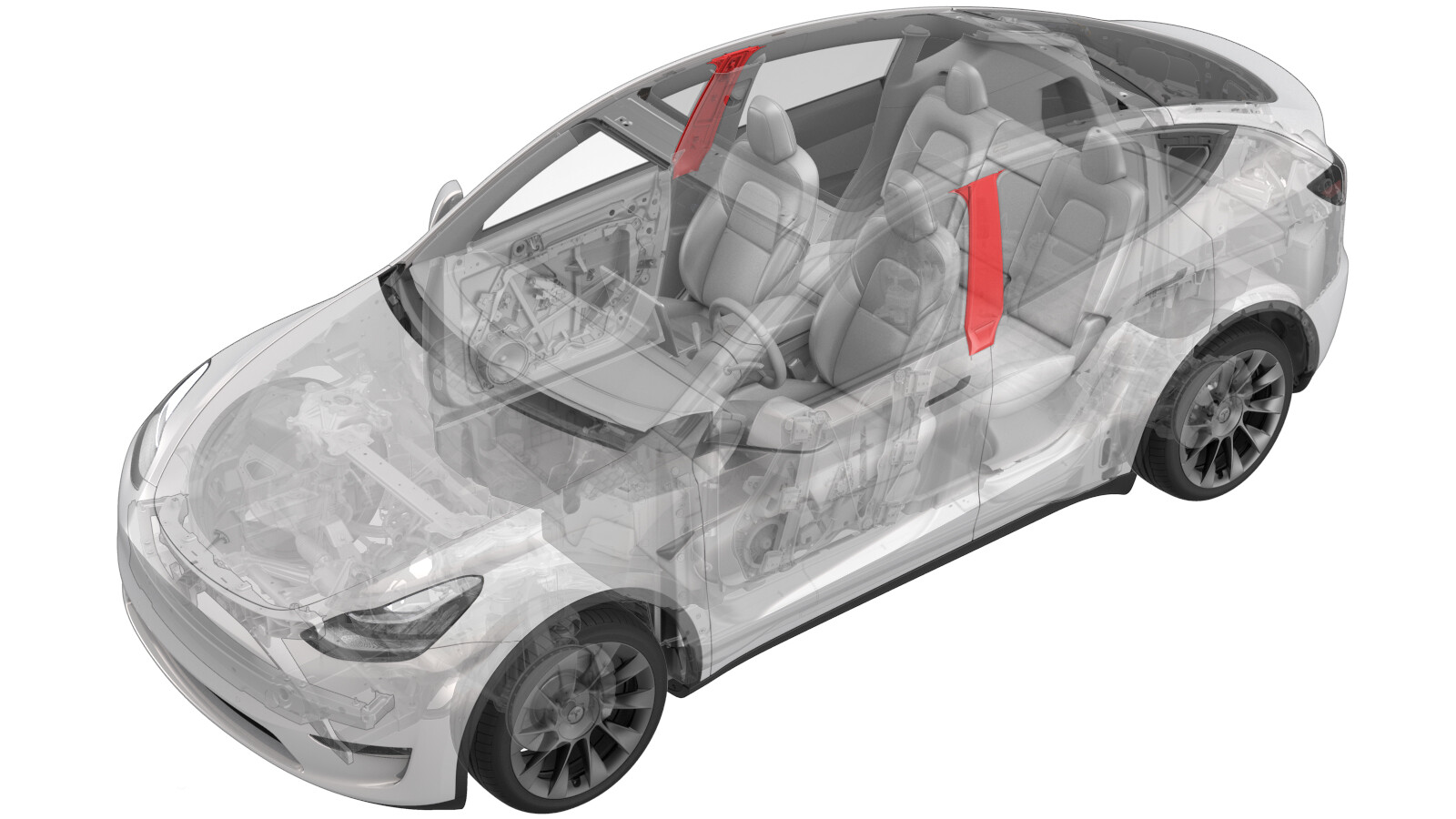Applique - B-Pillar - LH (Remove and Replace)
 Correction code
12200102
0.18
NOTE: Unless otherwise explicitly
stated in the procedure, the above correction code and FRT reflect all of the work
required to perform this procedure, including the linked procedures. Do not stack correction codes unless
explicitly told to do so.
NOTE: See Flat Rate
Times to learn more about FRTs and how they are created. To provide feedback on
FRT values, email ServiceManualFeedback@tesla.com.
NOTE: See Personal Protection to make sure wearing proper PPE when
performing the below procedure. See Ergonomic Precautions for safe and healthy working practices.
Correction code
12200102
0.18
NOTE: Unless otherwise explicitly
stated in the procedure, the above correction code and FRT reflect all of the work
required to perform this procedure, including the linked procedures. Do not stack correction codes unless
explicitly told to do so.
NOTE: See Flat Rate
Times to learn more about FRTs and how they are created. To provide feedback on
FRT values, email ServiceManualFeedback@tesla.com.
NOTE: See Personal Protection to make sure wearing proper PPE when
performing the below procedure. See Ergonomic Precautions for safe and healthy working practices.
- 2023-11-28: Added camera connection test.
- LH B-Pillar Applique - Replaces the LH side-view DAS camera, the external NFC key card reader, and the LH Bluetooth endpoint.
- RH B-Pillar Applique - Replaces the RH side-view DAS camera and the RH Bluetooth endpoint.
Remove
- Open the LH front and rear doors and lower the LH front and rear windows.
-
Release the LH rear primary
seal from the B-pillar area.
-
Release the trim clip that
attaches the lower B-pillar applique to the B-pillar.
NoteInsert the clip prytool between the lower spot welds on the B-pillar, and under the B-pillar applique seal.
-
Release the trim clip that attaches the upper portion of the B-pillar
applique to the B-pillar.
NoteInsert the clip prytool between the upper spot welds on the B-pillar, and under the B-pillar applique seal.
-
Slide the B-pillar applique down slightly
to release the assembly from the body, and then disconnect the
camera connectors from the B-pillar applique.
CAUTIONUse caution not to damage the camera connectors.
-
Release the clip that attaches the
B-pillar applique seal to the vehicle, and then remove the applique from the
vehicle.
CAUTIONSlide the clip prytool underneath the clip to release it from the body. The clip is glued to the seal and will tear if the pry tool is engaged at the seal clip.
Install
-
Remove residual adhesive from the LH B-pillar and clean the surface with an
IPA wipe.
NoteAllow 1 minute for the IPA to dry.
-
Connect the camera connectors to the B-pillar applique, and then position the applique onto the vehicle.
NoteEnsure the connector lock is fully engaged.
-
Position the B-pillar
applique onto the
vehicle, and then engage the clips that attach the B-pillar applique to the vehicle.
-
Engage the clip that attaches the upper LH B-pillar seal to the
vehicle.
-
Gently press the double sided tape that attaches the lower portion of the
B-pillar applique seal to the vehicle.
- Install the LH rear primary body seal onto the B-pillar.
- Close the LH rear door.
-
HW4 cameras only: Run the camera
connection test to update the new camera's firmware.
NoteDAS Cameras are not CAN modules and cannot be updated via firmware reinstall or "Part Replacement Deploy".
-
Reinstall the vehicle firmware. See
Software Reinstall - Touchscreen.
NoteSkip this step if reinstalling the original B-pillar applique assembly that came with the vehicle.
-
Perform the following
routine using Service Mode or Toolbox (see 0005 - Service Modes):
PROC_DAS_X_CLEAR-CALIBRATIONvia Toolbox: (link)via Service Mode:
- Driver Assist ➜ Cameras ➜ Clear Camera Calibration
- Driver Assist ➜ Driverless ➜ Clear Calibration
- Perform the following routine using Service Mode or Toolbox (see 0005 - Service Modes): PROC_DAS_X_CAPTURE-IMAGEvia Toolbox: (link)via Service Mode Plus: Driver Assist ➜ Cameras ➜ Image Capture
- Review the images to make sure all cameras are able to capture images correctly.
- Verify that all key cards work on the B-pillar applique as designed.
-
Inform the customer that manual driving is now required to allow the camera to self-calibrate.
NoteSelf-calibration can take up to 100 miles (160 km) of manual driving, depending upon the road type and condition. Until self-calibration is complete, the message "Autopilot Features Currently Unavailable: Manual Driving Required While Camera Is Calibrating" is displayed if an attempt is made to engage an Autopilot feature.